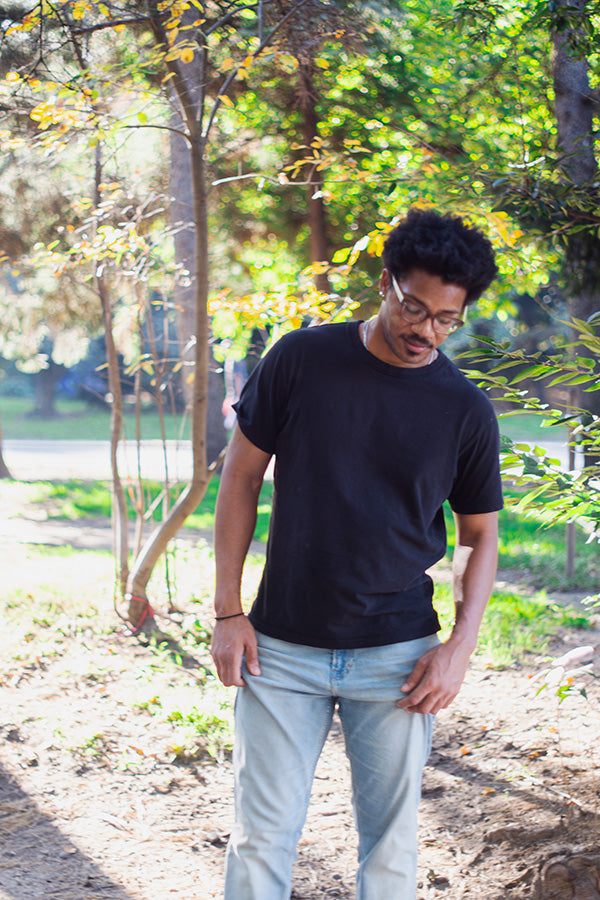Reason by Erik Deutsch, Theo Bleckmann and Sly5thAve makes jazz, pop and avant-garde flavors into a compelling musical adventure. Recorded live at Dazzle, one of Boulder, Colorado’s premier performance venues, Reason combines masterful instrumental playing and Bleckmann’s virtuoso singing with you-are-there Pure DSD sound.
Pianist Erik Deutsch is a world-class musician who tours with the Black Crowes and who has played with a wide range of artists including Norah Jones, Shelby Lynne, Don Byron, Warren Haynes, Levon Helm, Bill Kreutzmann and many others. He plays acoustic and Rhodes electric piano on Reason. Theo Bleckmann is a renowned vocalist, composer and GRAMMY-nominated artist and the recipient of a prestigious JAZZ ECHO award from Germany’s Deutsche Phono-Akademie. Multi-instrumentalist, producer, arranger and composer Sly5thAve has roots in hip-hop, soul, R&B and jazz. He plays bass clarinet, saxophone and flute on the album. His new solo record, Liberation, will be out on March 22.
Reason was recorded and mixed using Octave Records’ Pure DSD process, and the sound quality is exceptionally pure – richly textured, with depth, body and spaciousness, and dynamic nuance.
The song selection on Reason is as eclectic as the playing, from Theo Bleckmann originals like “Happiness,” with its compelling intervallic leaps and complex harmonies, to the band’s distinctively different take on Pink’s “God Is a DJ,” and “Nearer Suns,” based on a Franz Schubert composition. All the tracks were done in one take with no overdubs – all the more remarkable considering all three musicians manipulated their instruments and vocals in real-time using what seem like synthesizers and studio effects, but are part of the live performances. The band sounds utterly unique and the instruments are remarkably well-recorded, from the presence and overtones of the Yamaha grand piano to the distinctive character and resonance of Sly5thAve’s bass clarinet.
The album was recorded by Steven Vidaic with Giselle Collazo assisting, mixed by Jay Elliott, and mastered by Gus Skinas. The album features Octave’s premium gold disc formulation, and the disc is playable on any SACD, CD, DVD, or Blu-ray player. It also has a high-resolution DSD layer that is accessible by using any SACD player or a PS Audio SACD transport. In addition, the master DSD and PCM files are available for purchase and download, including DSD 256, DSD 128, DSD 64, and DSDDirect Mastered 352.8 kHz/24-bit, 176.2 kHz/24-bit, 88.2 kHz/24-bit, and 44.1 kHz/24-bit PCM. (SRP: $19 – $39, depending on format.)
I spoke with Erik Deutsch about how Reason came to be.
Frank Doris: How did you hook up with the guys in the band and get it together? I mean, the music is absolutely fantastic.
Erik Deutsch: Theo is a very well established, very well-known singer in New York City, and so I heard about him from my first days in New York. There are not that many male jazz singers that are working, especially in the creative jazz side of the business, or doing what he does or [are] even in his genre. I got a call from him around 2011, 2012 for a gig.
We hit it off, and he then asked me to go on tour with him in Europe. The tour was amazing. We realized we liked to hang out and liked playing together, and so, fast forward a number of years, we try to find ways to collaborate and work together when we can.
I think that's how this show [the live dates for the Reason album] came to be, because as the pandemic took a little tiny break, I guess this is 2021, we had the opportunity to book Dazzle in Denver. Well, none of us had worked much that year, so it was a real opportunity to get out there with some folks coming to see us. I invited my buddy Sly, who I had been working with in Mexico City.
Erik Deutsch. Courtesy of the artist.
FD: I’m really impressed by the blend of the instruments and the musical interplay. Did you guys rehearse this stuff or was it all spontaneous, or a combination of both?
ED: Theo has a lot of repertoire, and we had written a little bit together during the pandemic. He is very organized, he's always got some music, [and] everything's put together. I worked on it and gave it to Sly but then the three of us didn’t get together until the day of the show.
FD: Sounds about right!
ED: It's pretty hard music.
So, we rehearsed that afternoon of the first show and did four sets.
ED: We set up [the recording] with Paul [McGowan] and the crew because I had been working with them [on previous Octave recordings] and they were interested in a live record. I pitched it to Dazzle and they liked the idea.
FD: The recording quality is so good that I actually didn't even realize it was a live album at first. Did they multi-mike everything?
ED: Yeah.
FD: What about the synthesizer sounds? What kind of synths did you use, and were they going through amps or straight into the mixing board or what?
ED: I don't use a synthesizer. I only use a Fender Rhodes electric piano, and the [grand] piano.
FD: But all the musicians are credited with playing “live electronics.”
ED: No synthesizers. Theo has effects on his voice, and he's processing his voice live on stage. He has a table [full] of stuff. I had some pedals for that Fender Rhodes, and Sly had some effects pedals for his horns.
FD: I stand corrected!
Theo Bleckmann. Courtesy of Lynne Harty.
ED: Theo is a fantastic musician and an adventurous musician. With him, the music is always challenging and adventurous, and I love that about him, and I think that's why we get along, because I'm not afraid to tackle that kind of stuff to put in some work and get after it.
FD: I don't know if the average musician could pull that stuff off.
ED: I'm going to say no.
There are all kinds of musicians and we all do different things. I think [our material] just takes a mix of being able to read, being able to count, being able to technically attack some tricky things, and also being open, being sonically creative and being open to that, and being able to read what's on the page and then depart [from it]. There's a jazz mentality, but there's also a classical mentality to it. You’ve got to find the right cast. I do think that it can be a little challenging for certain audiences, and I'm not sure everybody was totally with us in Colorado those nights, but you take what you can get.
FD: The recording quality is gorgeous. Do you know what kind of piano was in the venue? I'm assuming it's a grand piano.
ED: Yeah, it's a Yamaha nine-foot, maybe seven-foot. It's a huge one, but a great one. And well, Steve Vidaic was the engineer, and then Jay [Elliott] did the mix and he just worked really hard on it and did a great, great job.
FD: How'd you pick the material?
ED: Again, it was mostly Theo's choices. Some of that stuff Theo and I had worked out in advance or on a duo tour [we had done], and we had written a couple of things during the pandemic. Other than that, Theo just filled it in with some things he thought would be nice.
One thing I've learned over the years is that when you are working with a singer, they're generally going to pick the material, because they don't just sing anything. They sing what makes sense to them, [whereas], as instrumentalists, we can kind of more or less take a shot at anything. In the end, it's going to come down to what they're feeling and what they're wanting to sing. What they're feeling in their bones and what makes sense to them musically and emotionally.
Sly5thAve. Courtesy of Gigi Nettles.
FD: Every music has its influences, but, and I’m sure I said this about your other Octave Records album Decades, but Reason is also its own thing, which to me is the best kind of music there is.
ED: Totally. Thank you, man. Appreciate that.
FD: Also just literally the sound of it. Boy, you had me fooled. I could have sworn there were synthesizers in there.
ED: Part of the fun about playing keyboards is kind of disguising them, making people guess. There was a distortion pedal, and a delay pedal. Usually. That's kind of always been my go-to, for that psychedelic Rhodes thing. I'd probably use a volume pedal to get a kind of swelling [sound], so [with] the volume pedal with the distortion and the delay you can kind of swell that distortion into the delay and make it echo into itself. I was playing through a Fender Deluxe Reverb, a beautiful amp that we rent.
FD: Really? That’s usually used for guitar. Interesting that you’d play keyboards through it.
ED: Oh, it sounds good. Those tubes [in the amp] make the Rhodes.
FD: Anything else you want to say?
ED: In the end, this kind of music is not for everybody, and I really appreciate the opportunity for Octave Records to let us make the record. We're so happy to have it documented, and it's a beautiful thing to play four sets in two nights and then have them recorded, because by the fourth set, you're going to get it. You know what I mean?


























































































































